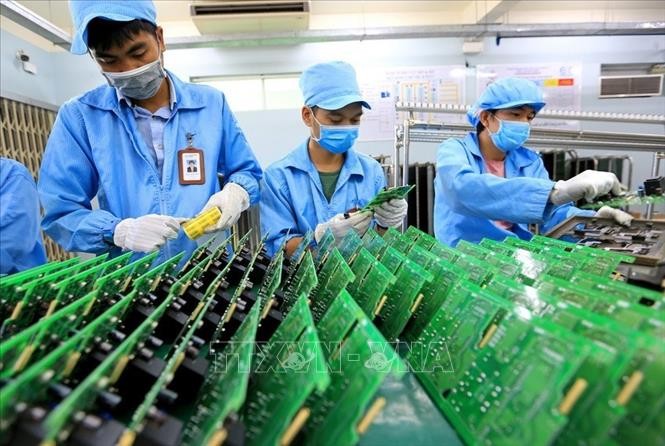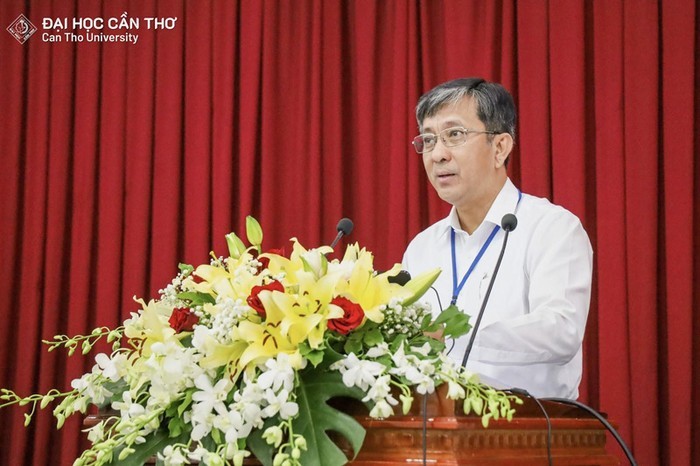(VOVWORLD) - Vietnam’s Science, Technology, and Innovation Development Strategy to 2030 has identified technologies such as chip manufacturing and semiconductor components as core areas for the coming decades. By 2030, the semiconductor industry is expected to generate 20 to 30 billion USD in annual revenue. To do that, Vietnam needs at least 50,000 engineers, 10 times the current number. This makes developing human resources for the semiconductor industry a top priority.
 (File photo: Ngoc Ha/VNA) (File photo: Ngoc Ha/VNA) |
The semiconductor industry is of strategic importance globally, with sales totaling 520 billion USD last year and growing rapidly.
Due to post-pandemic market repositioning and intense competition between major players, Vietnam has an opportunity and the needed resources to develop a semiconductor ecosystem and improve its position in the global semiconductor supply chain.
Dao Trong Do of the Ministry of Labor, Invalids and Social Affairs, says that in September the government approved a program called "Developing human resources for the semiconductor industry to 2030, with a vision to 2050."
“The government plans to establish three regional centers to help universities in the three regions learn new technologies. In the initial period, about 45 schools will be selected to offer human resource training to meet domestic needs and be on par with regional and global standards,” said Do.
Vietnam now has about 50 semiconductor design service companies, most of them foreign-invested companies from the US, South Korea, Japan, Taiwan (China), or the Netherlands, employing 5,000 engineers.
Domestically, companies like Viettel, FPT, and VNChip are actively engaged in the market. Vietnam's semiconductor industry will likely exceed 6.1 billion USD in value this year.
But in order to participate fully in all stages of the industry, Vietnamese businesses, in addition to Government support, must quickly develop their own human resources so as not to miss the opportunity.
Schools and businesses are working with each other to train qualified engineers, says Tran Trung Tinh of Can Tho University.
“We are ready to invite businesses to support training based on their needs. Students can study both the school’s curricula and the business's programs. That way, they can meet the job requirements immediately upon graduation,” Tinh noted.
 Tran Trung Tinh, Rector of Can Tho University (Photo: ctu.edu.vn) Tran Trung Tinh, Rector of Can Tho University (Photo: ctu.edu.vn) |
The National Innovation Center of the Ministry of Planning and Investment organizes training courses for 500 to 600 chip and semiconductor engineers each year and provides scholarships to talented students and engineers.
Trinh Khac Hue, General Director of the Qorvo Vietnam Corporation, said these programs are praised by businesses. “The training programs closely follow the real needs of businesses so that after their training, the engineers can immediately enter the domestic semiconductor industry.”
To create a high-quality workforce that meets the needs of the world's leading technology corporations while building its own semiconductor industry, Vietnam looks to international cooperation.
“International cooperation in training is extremely important as it enables us to access state-of-the-art technologies and leading experts in the field. We subsidize students’ tuition fees,” said Dr. Tran The Son, Rector of the Vietnam-Korea University of Information and Communications Technology.
Vietnam has a big advantage in human resources, because so many Vietnamese students have an aptitude in science, technology, engineering, and mathematics (STEM), fundamental for the design and production of semiconductor chips.
The country has been developing human resources in chip hardware design and production and incubating businesses in electronic microchips to achieve its goal of participating in the global semiconductor industry value chain by 2050.